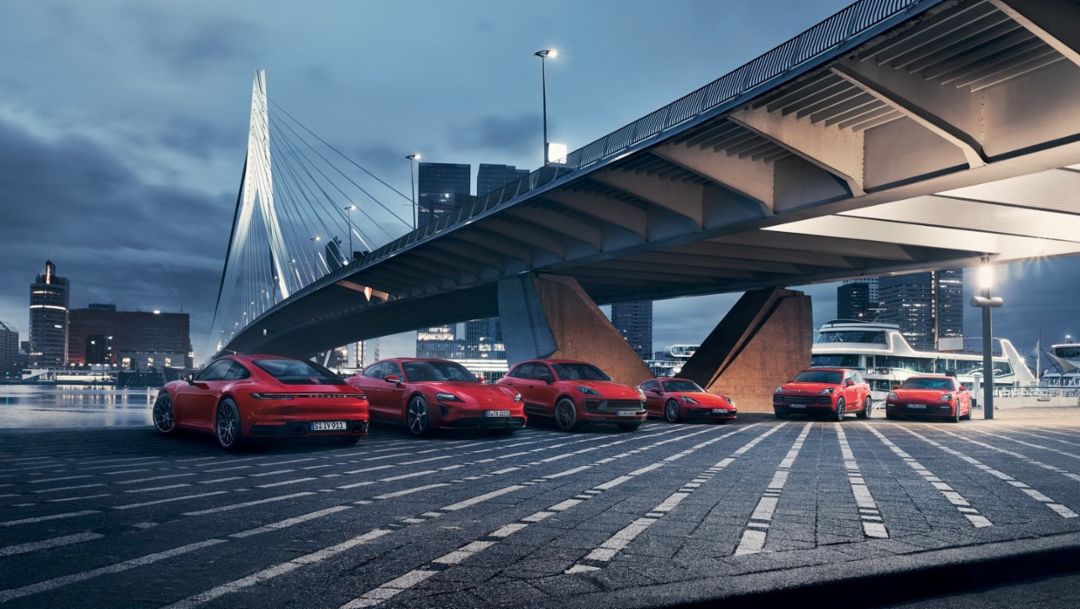Porsche has started its anniversary year with an increase in deliveries of 18 per cent. In the first three months of 2023, the sports car manufacturer delivered 80,767 vehicles to customers worldwide.

“We are pleased with this outstanding result. It shows the strong demand for our products and the strength of our brand.” said Detlev von Platen, Executive Board Member for Sales and Marketing at Porsche AG. “It’s particularly pleasing that we were able to post gains in every sales region – in spite of the still volatile economic situation and limited parts availability.”
China and North America with significant year-on-year increase
In Europe, Porsche delivered 18,420 cars in the first quarter, marking a year-on-year increase of 14 per cent over the same period in 2022. In the company’s home market, Germany, the number of vehicles delivered also rose to 8,247, representing an increase of 19 per cent. In China, the largest single market for Porsche, the sports car manufacturer made 21,365 deliveries between January and March, an increase of 21 per cent year-on-year. A major reason for this is, that the country continues to recover from the pandemic-inducted impact.
In North America, Porsche delivered 19,651 vehicles to customers, a gain of 30 per cent. In the overseas and emerging markets, 13,084 cars were delivered to customers, an increase of 5 per cent.
SUVs remain extremely popular
SUV models remain extremely popular among Porsche customers. In total, 23,880 examples of the Porsche Macan were delivered to customers (+30 per cent).
The Cayenne recorded 23,387 deliveries (+23 per cent). The iconic 911 sports car still remains a customer favourite: 11,063 examples went out to customers worldwide (+19 per cent). A total of 8,479 models from the Panamera range were delivered (+10 per cent).
In the first quarter, 9,152 customers took delivery of the all-electric Taycan (-3 per cent). The reason for the decline are the still existing supply bottlenecks in the supplier industry, which are having a particular impact on the electric sports car. The 718 Boxster and 718 Cayman models contributed a further 4,806 deliveries (+6 per cent).
"Our focus is on value-oriented growth. We pursue the goal of always producing one vehicle less than the market demands," says Detlev von Platen. "The good start makes us confident for the rest of the year. At the same time, we remain vigilant and flexible in an environment that remains challenging.
|
Porsche AG |
January – March | ||
| 2022 | 2023 | Difference | |
| Worldwide | 68,426 | 80,767 | +18% |
| Germany | 6,925 | 8,247 | +19% |
| North America | 15,167 | 19,651 | +30% |
| China | 17,685 | 21,365 | +21% |
| Europa (excluding Germany) | 16,186 | 18,420 | +14% |
| Overseas and Emerging Markets | 12,463 | 13,084 | +5% |
Disclaimer
This press release contains forward-looking statements and information that reflect Dr. Ing. h.c. F. Porsche AG's current views about future events. These statements are subject to many risks, uncertainties, and assumptions. They are based on assumptions relating to the development of the economic, political, and legal environment in individual countries, economic regions, and markets, and in particular for the automotive industry, which we have made on the basis of the information available to us and which we consider to be realistic at the time of publication. If any of these risks and uncertainties materializes or if the assumptions underlying any of the forward-looking statements prove to be incorrect, the actual results may be materially different from those Porsche AG expresses or implies by such statements. Forward-looking statements in this press release are based solely on the circumstances at the date of publication.
We do not update forward-looking statements retrospectively. Such statements are valid on the date of publication and can be superseded.
This information does not constitute an offer to exchange or sell or an offer to exchange or buy any securities.


